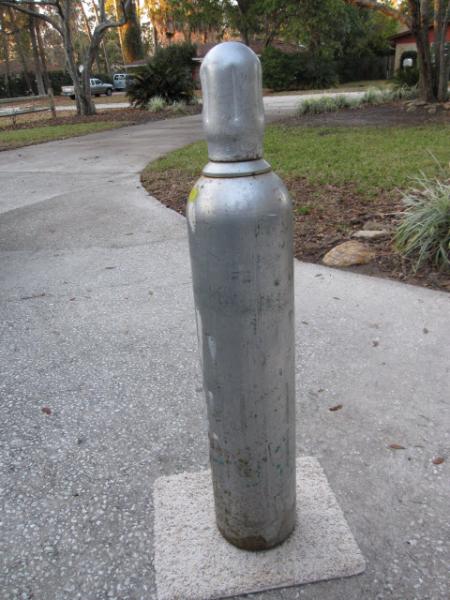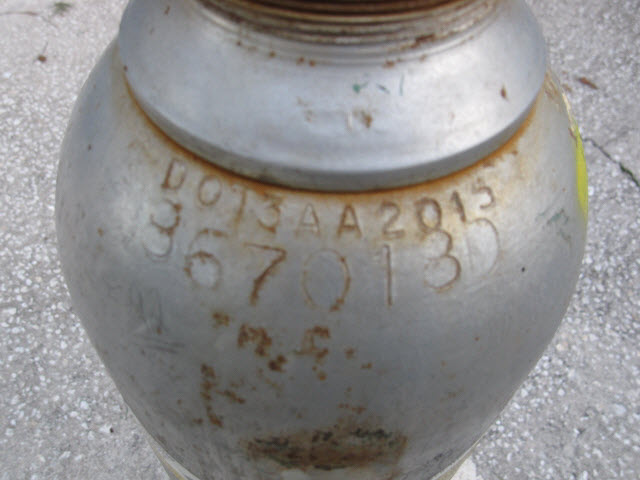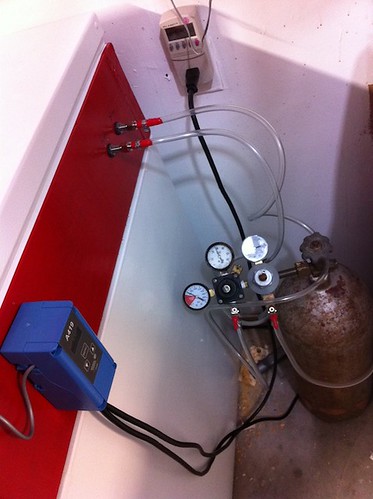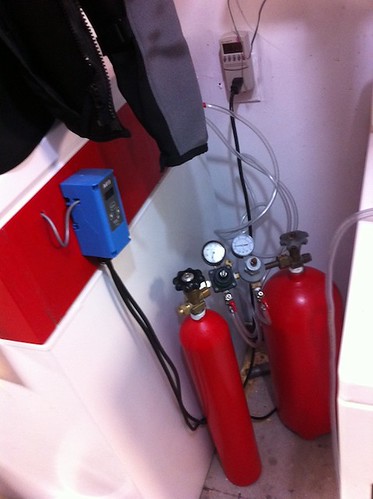Seven
Well-Known Member
I received an old C02 tank recently and I was wondering if someone out there could possibly help me with some questions I have about this tank.
Here are the facts:
My questions are:
Any information would be appreciated!




Here are the facts:
- The rough physical dimensions are 31-inches tall (not counting the tank valve) by 7-inches diameter.
- It's at least 25-years old. Maybe even 30-years old.
- I think it's made of steel.
- I took it to the local welding shop for re-certification inspection last week, they in turn sent it to another agency, and it passed.
- The guy at the welding shop said he had never seen a tank like this used for beverage dispensing before.
- I know it was used for beverage dispensing for many years prior to me obtaining it.
- The welding shop guy said they weren't sure of the total capacity of the tank so they only filled it with 20-pounds of C02. (maybe they just didn't have the time to research it?)
My questions are:
- Is it safe to use this tank for beverage dispensing?
- What is the total C02 gas capacity of this tank?
Any information would be appreciated!








